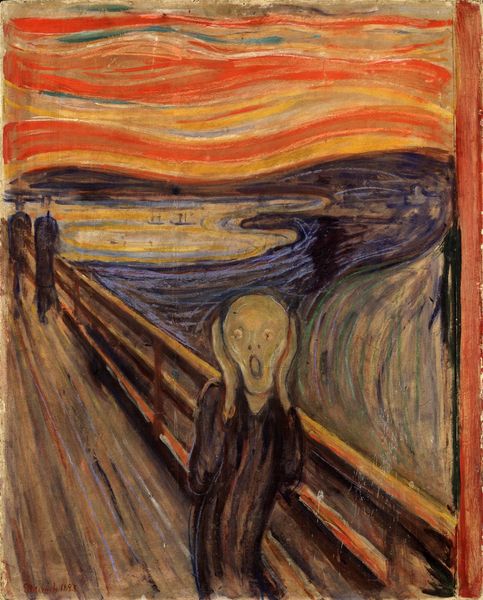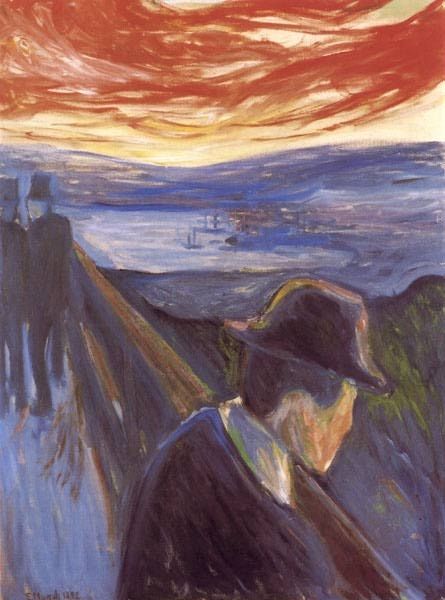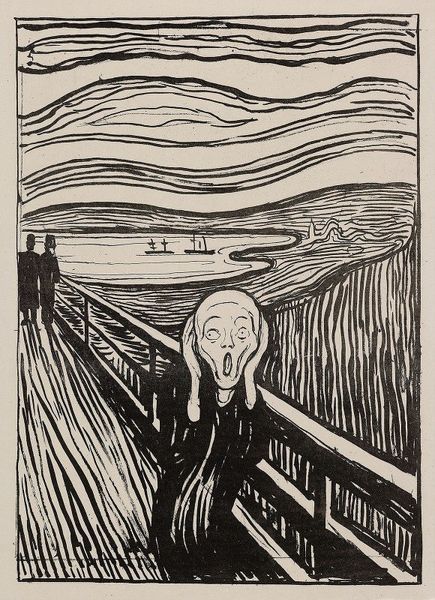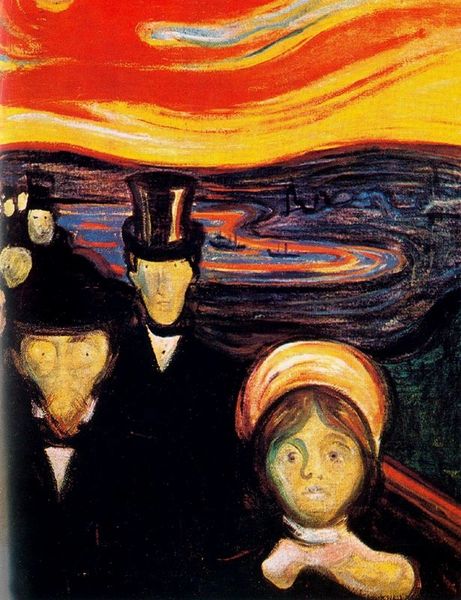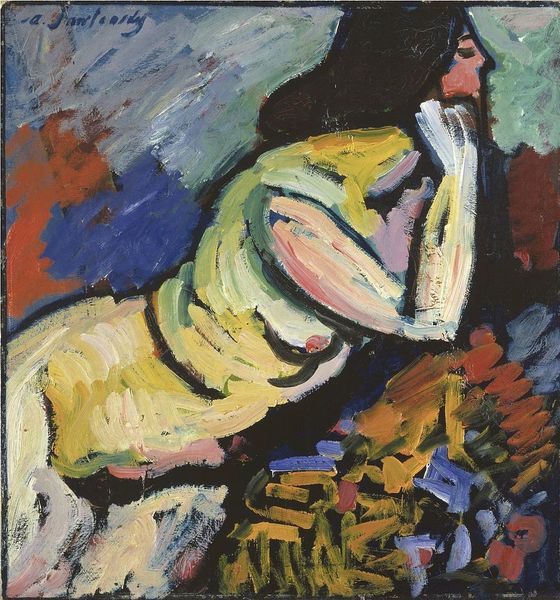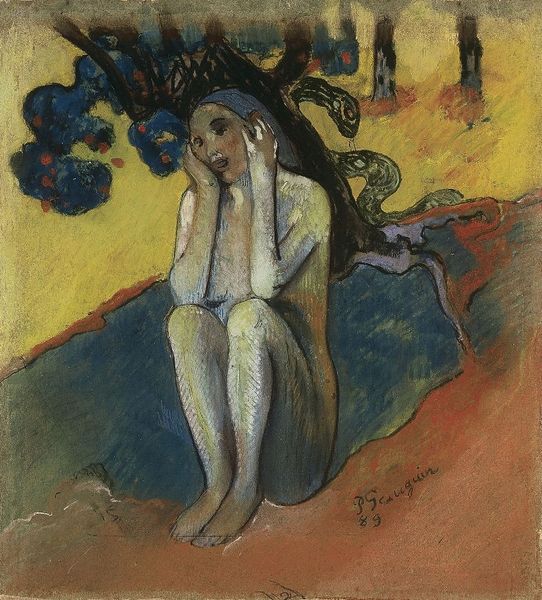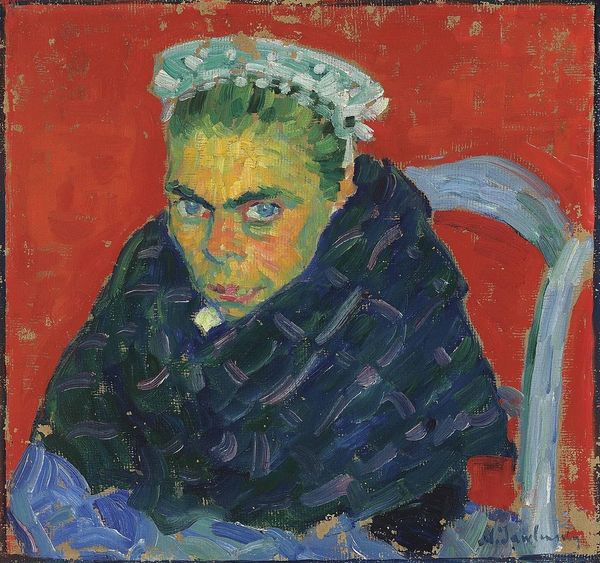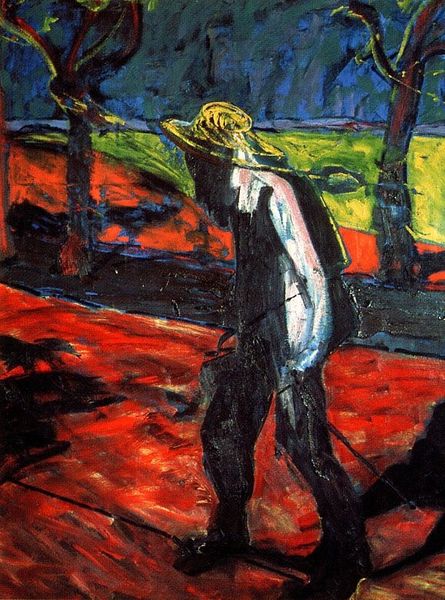
painting, oil-paint
#
portrait
#
painting
#
oil-paint
#
landscape
#
expressionism
#
symbolism
#
modernism
#
expressionist
Copyright: Public Domain: Artvee
Curator: Here we have Edvard Munch's "Despair," an oil on canvas from 1894. The scene is striking. What's your initial response? Editor: My first impression is that it embodies an overwhelming sense of gloom. The palette, dominated by blues and reds, conveys both the inner torment and perhaps the external social and material pressures of the late 19th century. Curator: Precisely. Observe how Munch manipulates color. The fiery sky, with its swirling bands of red and orange, clashes against the cool blues of the fjord, creating visual tension, while also highlighting the synthetic colours that reflect modernity’s shift in materiality. It amplifies the central figure’s distress. Editor: Speaking of materiality, let's consider Munch's brushwork. It’s quite textured, almost agitated, especially in the rendering of the sky and the bridge railing. This physicality conveys the labor involved, as if the very application of paint echoes the inner turmoil and the daily struggles mirrored by this period. Curator: Absolutely, the formal composition also deserves close attention. The bridge acts as a strong diagonal, dividing the pictorial space. Our central figure, positioned off-center, draws the eye, and notice how his downcast gaze and slumped posture contribute to the overwhelming sense of desolation. It evokes themes of isolation that resonated with many artists then. Editor: And isn't that isolation symptomatic of a society undergoing rapid industrialization and shifts in social structures? The alienation that industrial labor produced also made art an commodity in its own right, which may have created internal conflicts for Munch in addition to those already present. This piece could then speak to the societal despair he perhaps encountered. Curator: That is an insightful consideration. Ultimately, the painting is more than just a depiction of sadness. It is a profound study of existential angst, manifested through both stylistic elements and symbolic components. It prompts the viewer to ponder the universal nature of suffering, both in that particular context and still in the present day. Editor: Right, by focusing on Munch’s process, we start to connect with his artistic vision. He sought to express not merely what he saw, but what he felt deeply. In essence, his art becomes a conduit for understanding both the tangible and psychological dimensions of the turn of the century and those that continue to emerge today.
Comments
griffin almost 2 years ago
⋮
The audacity you have to combine the song and this painting. Hit different ❤️
Join the conversation
Join millions of artists and users on Artera today and experience the ultimate creative platform.
gabs almost 2 years ago
⋮
Follow my ‘CLICK COMMENTS FOR MUSIC’ collection to understand audio

